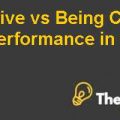Hdfc bank: Camels analysis and discounted cash flow valuation Case Study Help
Intrinsic value of the HDFC Bank stock
For the calculation of intrinsic value of HDFC stock;DCF valuation method was used. DCF valuation is primarily used for the value estimation of investment, on the basis of future cash flows. For this purpose, the cost of equity was calculated by considering beta, risk free rate and market risk premium values given in the case. Risk free rate was added with market risk premium and then multiplied by beta, which led to the cost of equity value i.e. 16.01 percent. Cost of equity was calculated for the calculation of WACC, i.e. 6.17 percent as shown in Appendix A.
No assumptions were considered for the calculation despite the usage of CAGR value for Capex, depreciation and net working capital. Using free cash flows of the forecasted year 2028 at the terminal growth rate of 6 percent; the terminal value of the organization was calculated as:416574.64. Similarly, the calculated Net Present Value was 248269.756 and equity value was estimated to be around 152505.823. Thus, the intrinsic value of stock was identified by dividing the number of shares i.e. 74.43 with the equity value. The intrinsic value of stock was around 2048.78, which is less than the market value of share price i.e. 1925.7, as shown in Appendix B.
Conclusion
The analysis of the Stock value showed that the market price of the stock is less as compared to its’ intrinsic value i.e. a difference of 123. This stated that the stocks of HDFC are undervalued. This represents an opportunity to the investors for investing in the stock market, because there seems to be high probability of profit generation..............................
This is just a sample partical work. Please place the order on the website to get your own originally done case solution.











